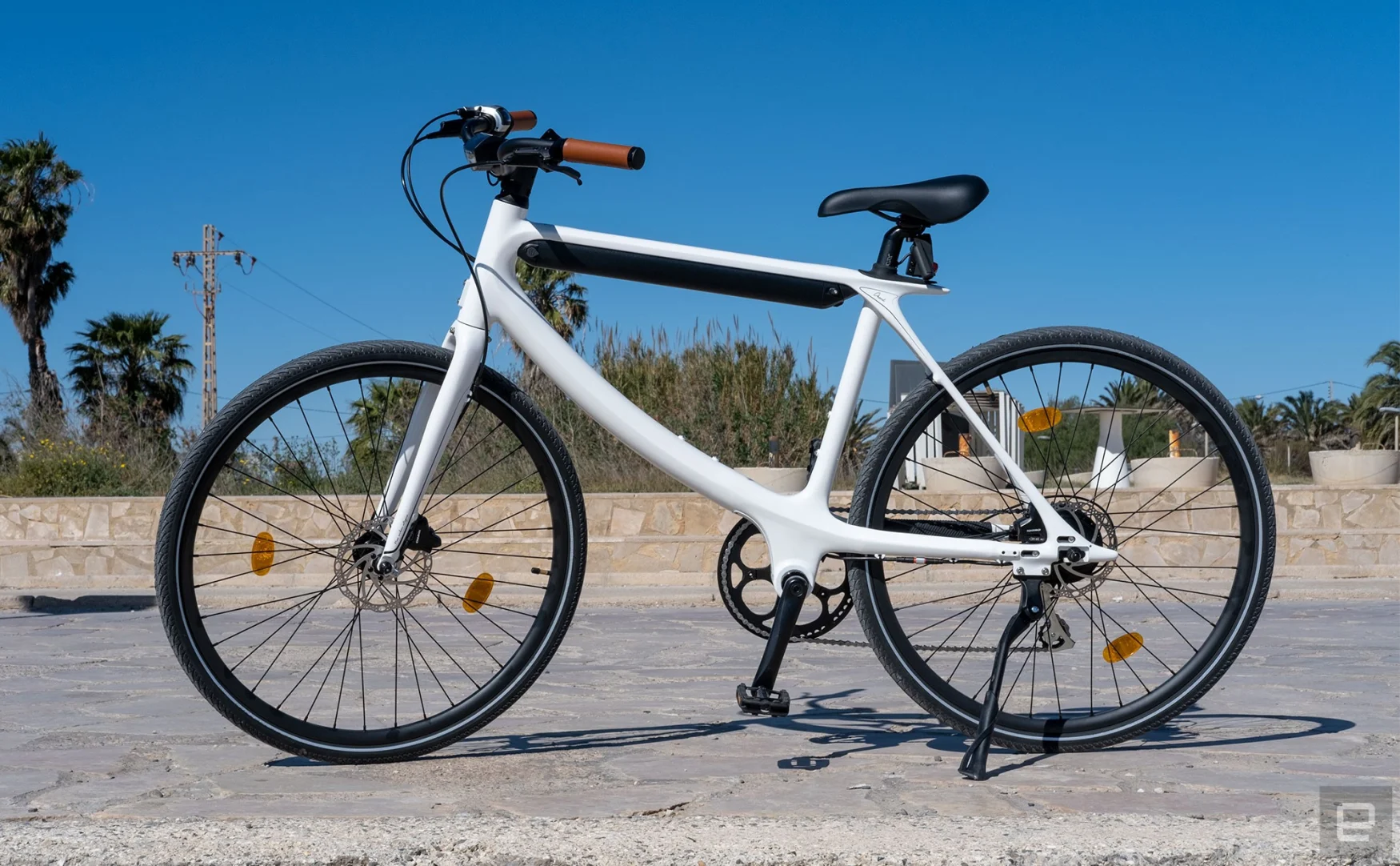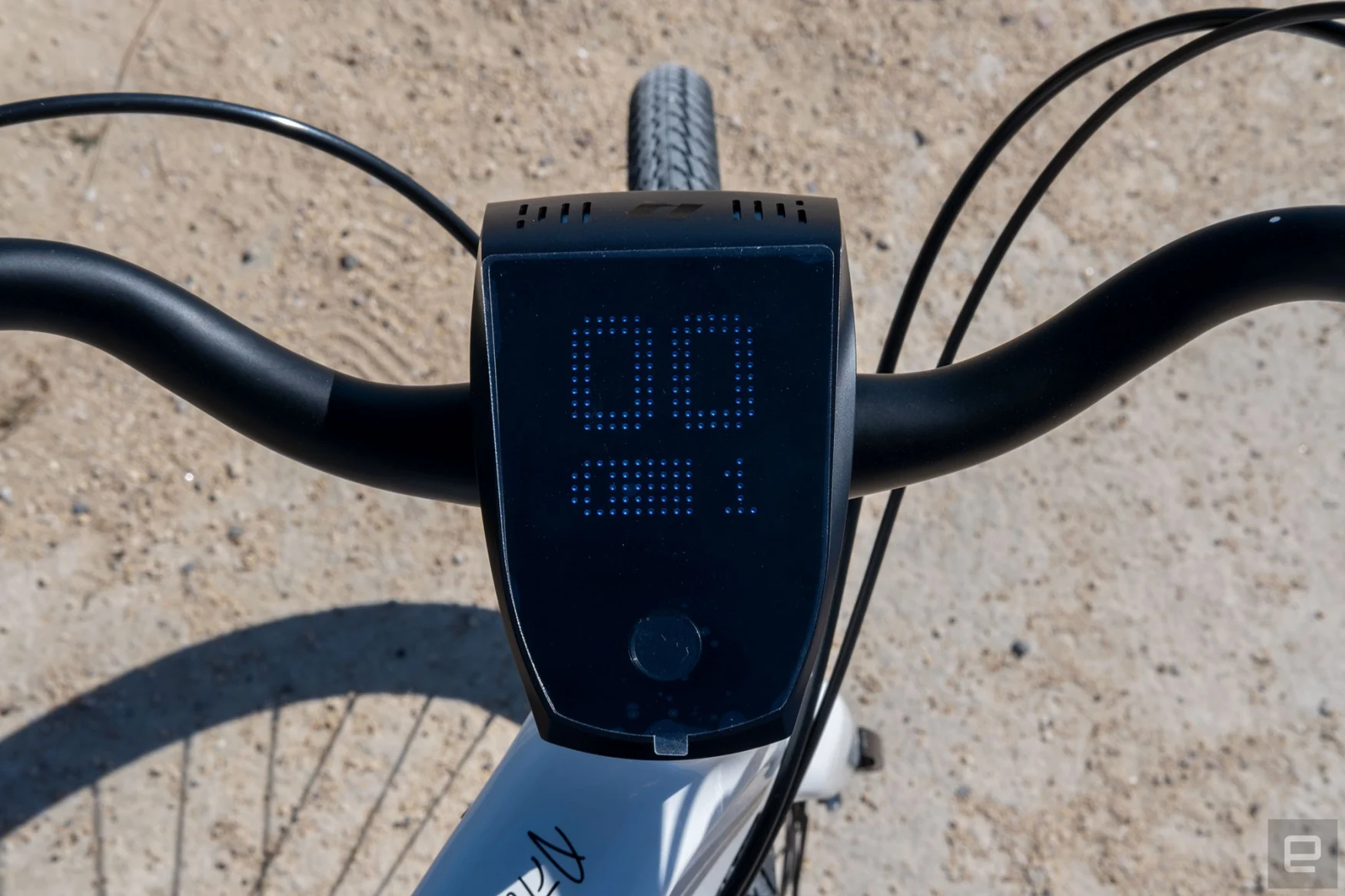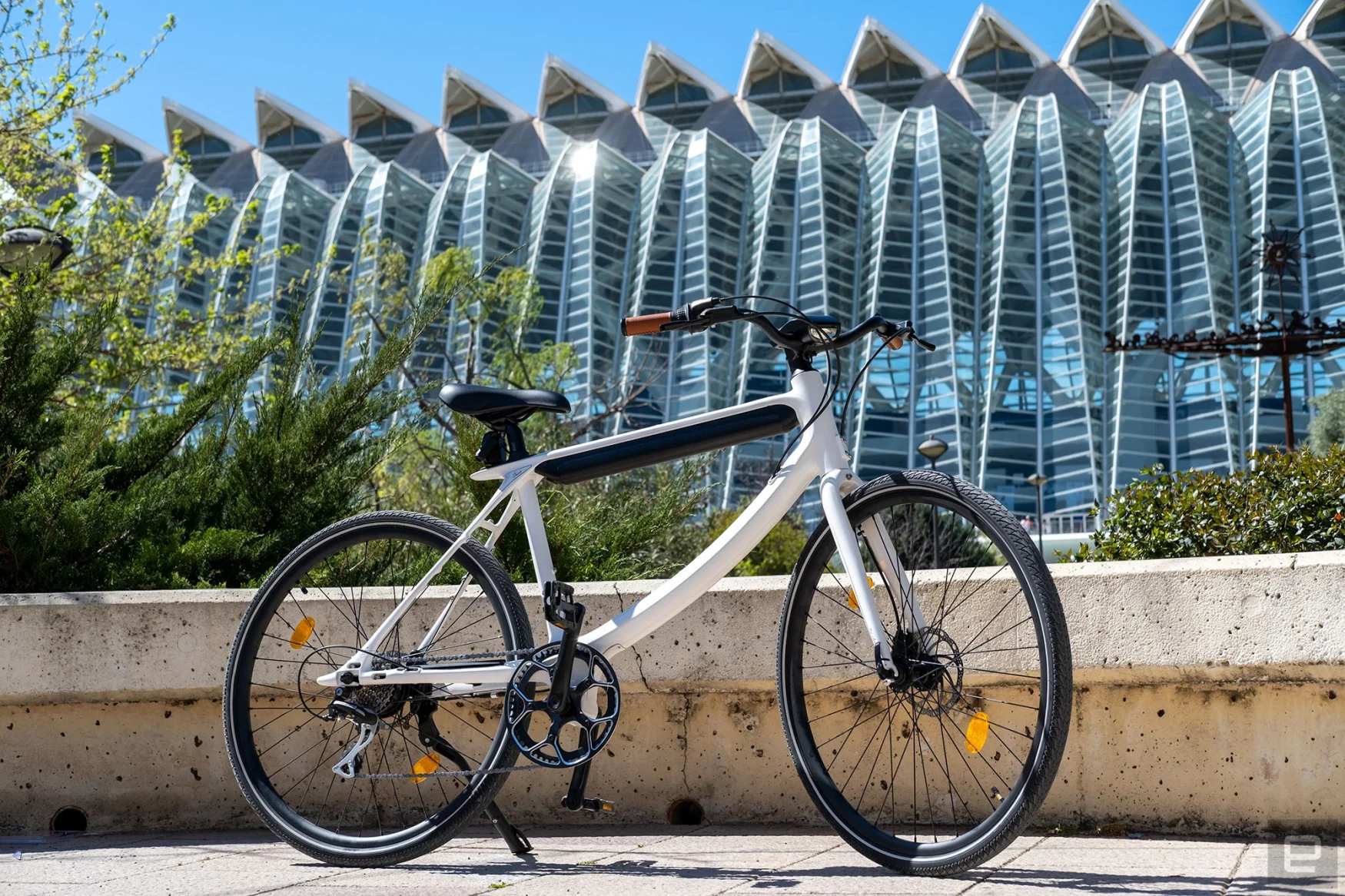Urtopia's Chord e-bike is a little overkill for a city ride and that's okay
Urtopia may be a relatively new name in the e-bike world, but it makes a strong first impression. With its 4G, GPS, mmWave sensors and even light projection turn indicators, the Carbon 1 felt like the Inspector Gadget of two-wheeled travel, but its exotic design and road-bike leanings meant it wasn’t for everyone. The company’s second bike, the Chord ($1,799), has a much less divisive aesthetic and – unlike its sibling – practicalities like gears and a more upright (and city-friendly) ride. Importantly, the Chord contains all the wireless connectivity of the Carbon 1 at a cheaper price, possibly making it a more compelling package overall.
The Chord feels like Urtopia’s attempt at a stylish city bike in the vague style of Cowboy or VanMoof. The Chord is apparently inspired by pianos, with its black and white colorway and the melodic notes that play when you cycle through the power modes. At 46 pounds (21 kilograms), it’s noticeably heavier than the Carbon 1 (33 pounds/15 kg), but it’s on par with other models in the same category.
The motor is a pretty straightforward 350W hub powered by a removable 360Wh battery. Top assisted speed is 20MPH over four modes: Eco, Comfort, Sport and Turbo. The maximum range is an estimated 75 miles, but that will obviously depend on how much assistance you use. As a Class 1 ebike, there’s no throttle mode here; instead, there’s a Turbo mode with barely any need to pedal to get you up to that maximum speed. As mentioned, the Chord comes with an 8-speed Shimano gear system which, combined with the assistance modes, make for a flexible ride in terms of speed and effort.

The more interesting features with Urtopia bikes come from its connectivity: WiFi, Bluetooth, GPS and 4G. Combined with an accelerometer and a gyroscope the Chord has a surprising amount of situational awareness, which I’ll get to later. Oh, you can also speak to the bike to change settings and use it as a Bluetooth speaker as you ride while receiving visual directions on the dot-matrix screen contained in the “smart box” bike computer. Did I mention there’s a comprehensive app with ride tracking, navigation and deeper settings, too?

Subscribe to the Engadget Deals Newsletter
Great deals on consumer electronics delivered straight to your inbox, curated by Engadget’s editorial team. See latest

Please enter a valid email address
Please select a newsletter
By subscribing, you are agreeing to Engadget’s Terms and Privacy Policy.
Taking the Chord out for the first time, it was hard to ignore the extra weight compared to the aforementioned Carbon 1, but also the similarly pitched Tenways. It’s not chonky in the same way something like the 63-pound (28-kilogram) Velotric Discover 1 is but those extra pounds were noticeable the first time I tried hustling it (upright) into the elevator in my apartment block. Thankfully, it’s not something you’ll notice so much while pedaling.
The riding position is naturally more upright and it makes for a comfortable cruise around town. It’s not designed for off-road, but if you find yourself on uneven pavement or even a short stint on a dirt trail it does a decent job considering. The motor uses a torque sensor to decide when to kick in; it’s a very common system right now and does a good job of delivering power just as you need it.
Now, about that power. In the scheme of things, a 350W motor is a pretty standard entry-level option; it’s not about to pull your wrists out of their sockets when it kicks in, but it’s gets you to that 20MPH max speed in good time, as long as you’re willing to do the your part on the pedals. The three power modes are spaced adequately for whether you just want a little help or just wanna surprise that weekend warrior as you pass them barely pedaling. Turbo mode will reach max power without you really trying too hard – it’s a good option for if you’re feeling really pooped, and it doesn’t feel like the bike is pulling away from you, which can sometimes be the case with similar modes on higher-powered bikes.

Utopia’s heavy-tech approach made the Carbon 1 stand out, but it also felt a little unpolished, at least in the first iteration of the app. The built-in GPS and 4G are meant to automatically record your rides and serve them up in the app with a map and statistics. Initially this felt a bit hit-and-miss. The fingerprint reader in the Carbon 1 was a nice touch, too, and it even doubled as an electric bell, but unfortunately it would often sound about half a second after I needed it. With the newer Chord, the software feels more finished from the get-go.
For starters, the bell is still digital (you can even change the sound), but it’s triggered by a much clickier button that’s much more responsive. More importantly, the app feels more refined now and I haven’t seen any rides go missing during my time with it. In fact, they appear almost instantly once I finish.
Of course, automatically mapping rides is cool, but it’s not the primary purpose of the 4G/GPS. That would be the ability to track your bike if someone steals it. As long as the Chord’s within cell coverage, you’ll be able to see its last known location via the app. You can also set it so you receive notification the moment the bike moves – potentially giving you a heads up before a thief can ride off with it. Of course, if the battery runs out or the GPS can’t see the sky it won’t update the app, but the cell lasts for a good amount of time in standby and it only fully turns off if you remove the battery, which requires a key (or bike-breaking brute force).
A quick note on the battery: Its placement under the top tube is a cunning way to semi-hide it, but also provides a little more protection from the elements. On the flip side, there’s no way to fully turn the bike off, so the 4G connection will gently drain the power between rides unless you remove it. In my testing, I also found that the estimated max range of 75 miles feels a little optimistic. It might be possible under optimal conditions, but even on shorter rides of 11 miles, with mixed use of modes and terrain, I had used up a claimed 25 percent of the cell. So if very long rides are your thing, take note.
If, upon hearing about all this 4G data you’ll be using, your first question was how much that’ll cost, the answer is nothing for the first year and then $29 annually after that. While it feels like everything has a subscription attached to it these days, this feels reasonable for the functionality you get out of it – especially if your bike does go missing and this helps you find it.
Beyond knowing where the bike is, the Chord can also guide you to your destination via built-in navigation. To be clear, it’s handled by the app, but when your phone is connected to the bike, the directions will appear on the dot-matrix style display. This also means you can keep your handset safely in your pocket or bag – unlike some bikes that make your phone the bike’s computer, forcing it to remain exposed to the elements.

With the Carbon 1, I thought the option to play music through the built-in speaker was a novelty at best. The Chord hasn’t changed my mind either. Your music is going to sound pretty bad, but it’s a fun party trick nonetheless. Perhaps it’s more useful for podcasts and audiobooks? Just know that it’s something you can do (but not necessarily something you should). The voice control is a little more practical, but I rarely find a moment where I’d rather lean into the bike and talk to it instead of using the app’s controls.
Another interesting change from the Carbon 1 is that the smart box (formerly, smartbar) is no longer built into the bike. On the Chord it’s a separate unit that you attach manually, opening the door for some level of modularity. Urtopia hints at this in its press materials, suggesting that in the future you could upgrade to a different smart box with a better display, or new features which is an interesting concept if nothing else.
With just its second bike, Urtopia is showing a promising mix of consistency and growth (where needed). The Chord is a pretty enough bike that, if it’s to your taste, would serve as a good general purpose city e-bike. It’s not the most powerful, nor the most longevous in terms of range at this price point. But it’s possibly one of the most tech-laden and featureful if that’s what you’re looking for. Sometime’s it feels like there’s a little too much focus on the tech features and less on the ride itself. The fact that the door for feature upgrades further down the line, via the modular smart box, though, shows some welcome initiative on the company’s part. For the price, though, it’s an easy recommendation if you love a quantified ride and rarely go off-road.
